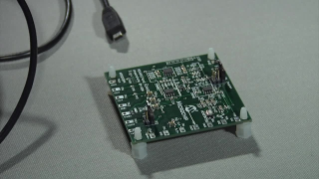Electronica Azi & Microchip ATtiny817 Xplained Pro
Win a Microchip ATtiny817 Xplained Pro (ATTINY817-XPRO) from Electronica Azi and if you don’t win, receive a 15% off coupon for this board, plus free shipping.
The ATtiny817 Xplained Pro evaluation kit is a hardware platform for evaluating the tinyAVR® microcontrollers (ATtiny817, ATtiny816, ATtiny814, ATtiny417). The evaluation kit comes with a fully integrated debugger that provides seamless integration with Atmel Studio.
The ATtiny817 microcontroller featuring the 8-bit AVR® processor with a hardware multiplier, running at up to 20 MHz and with 8 KB Flash, 512B SRAM, and 128B of EEPROM in a 24-pin package. The series uses the latest Core Independent Peripherals with low-power features, including an Event System, intelligent analog and advanced peripherals. Capacitive touch interfaces with proximity sensing and driven shield are supported by the integrated QTouch® peripheral touch controller.
ATtiny817 Xplained Pro currently supports more than 20 extension boards — including wired and wireless connectivity, crypto authentication, QTouch capacitive touch kits as well as generic I/O and OLED boards.











